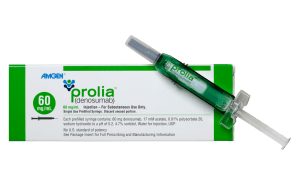
This year’s Eating Disorder Awareness Week theme is “The Time is Now.” It focuses on changing how people view the issue. It emphasizes sharing information and resources, promoting early detection and treatment, and supporting continued research efforts. Eating Disorder Awareness Week is held this year from February 24th to March 2nd.
Some shocking statistics about eating disorders
- Around 9% of people in the United States are expected to develop a disturbed eating pattern at some point in their lives.
- About 15% of all women will experience disordered eating, but only a quarter of them will seek treatment for it.
- They affect several million people at any given time, most often women between 12 and 35.
- Every year, eating disorders result in around ten thousand deaths.
- People with severe symptoms are 11 times more likely to attempt suicide compared to those without these symptoms. Even individuals with milder symptoms are twice as likely to attempt suicide.
- They cost the economy almost $65 billion annually.
What is an eating disorder?
Eating disorders are not simply an extreme diet, a choice, or a way to get attention. They can be serious mental health conditions that affect a person’s daily life. They can appear in different ways and impact people differently. According to the latest version of the Diagnostic and Statistical Manual of Mental Disorders (DSM-5), there are at least six types of eating disorders.
Anorexia nervosa, bulimia nervosa, and binge eating disorder are some of the more common eating disorders. Anorexia nervosa is characterized by eating very little, which results in extreme weight loss, an intense fear of gaining weight, and a distorted body image. Bulimia nervosa involves purging behaviors such as self-induced vomiting. Binge eating disorder is when a person repeatedly eats excessive quantities of food.
Other lesser-known conditions include avoidant/restrictive food intake disorder (ARFID), when a person strongly avoids certain foods or limits how much they eat, or does both. Pica disorder is diagnosed when a person repeatedly eats things that are not food and have no nutritional value, and rumination disorder is when the person repeatedly regurgitates food.
Some categories don’t fit into the main types but still cause significant challenges. For example, Other specified feeding or eating disorders (OSFED) don’t meet the full criteria for specific disorders like anorexia or bulimia but still cause significant distress or impairment. Examples include atypical anorexia or purging disorder. Unspecified feeding or eating disorders (UFED) is a diagnosis used when symptoms of a feeding or eating disorder are present but don’t fit into any specific category, often due to incomplete information. Another type of eating disorder is chewing and spitting (CHSP), which involves chewing food and spitting it out without swallowing.
Warning signs 
Behavioral, physical, and psychological signs may indicate an eating disorder. If someone shows several of these symptoms, it’s best to seek help right away to determine if they might have some eating disorder.
Recognizing the warning signs of an eating disorder can be challenging. People struggling with eating disorders often feel ashamed or guilty about their actions and may try to keep them hidden. In many cases, they may not even realize they have a problem, and even if they do, they might be hesitant to change their eating behavior because it serves as a way to cope with other issues. As a result, they may put significant effort into hiding their behavior from loved ones.
Eating disorders can appear in many different ways, and no two are exactly alike. A person might have several of these symptoms without actually having an eating disorder. It’s always a good idea to consult a professional for an accurate assessment.
Behavioral warning signs
-
- Frequent dieting behaviors might be noticeable, like counting calories, skipping meals, fasting, avoiding certain food groups (such as meat or dairy), or replacing meals with drinks.
- Compulsive exercise could be a sign of anorexia or bulimia. It might show up through behaviors like working out despite being injured, refusing to skip exercise for any reason, insisting on completing a certain number of repetitions, or becoming upset if unable to exercise.
- Developing strict habits or rituals related to food, such as needing meals at the same time every day, only using specific utensils, or insisting on drinking from a certain cup.
- Avoiding social events that involve eating.
- Frequently skipping meals by making excuses, like saying they already ate or claiming to have food allergies or intolerances.
- Becoming overly focused on preparing and planning food, such as shopping for ingredients, cooking meals for others without eating any themselves, taking control of family meals, or spending a lot of time reading cookbooks or nutrition guides.
- Fixating on body image and weight, including visiting weight-loss websites and social media, reading dieting tips, or looking at pictures of very thin people.
- Engaging in repetitive or obsessive behaviors like pinching their waist or wrists, frequently weighing themselves, or spending too much time looking in mirrors.
- Wearing loose or baggy clothes to hide their body.\
- Signs of vomiting or laxative misuse, such as frequent trips to the bathroom during or right after meals.
- Eating unusually slowly, like using very small utensils, cutting food into tiny pieces, eating one piece at a time, or moving food around on their plate instead of eating it.
- Constantly saying they aren’t hungry, even when it seems unlikely.
- Signs of binge eating could include large amounts of food disappearing from the kitchen, finding candy wrappers in the trash, or hiding food to prepare for overeating later.
Physical warning signs
- Sudden weight loss
- Frequent weight fluctuations
- Always feeling cold, even in warm environments
- Irregular or missed menstrual cycles (in females)
- Physical signs of frequent vomiting, such as swollen cheeks, callused knuckles, or damaged teeth
- Episodes of fainting or dizziness
- Constant fatigue and lack of energy to complete normal tasks
- Feeling uncomfortably full after meals.
Psychological warning signs
- An increased focus on body shape, weight, and appearance
- A strong fear of gaining weight
- Obsessing over food or food-related activities
- Extreme dissatisfaction with body image
- Distorted perception of body size (e.g., believing they are overweight when they are not)
- Being overly sensitive to comments or criticism about their body, eating habits, or exercise
- Feeling anxious during meals
- Struggling with depression or anxiety
- Frequent mood swings or irritability
- Low self-esteem, including feelings of worthlessness, guilt, or shame
- Rigid, all-or-nothing thinking (seeing things as either entirely “good” or “bad”)
- Feeling like life is out of control
- Difficulty managing behaviors around food.
What are some myths about eating disorders?
There are many misconceptions about eating disorders, especially when it comes to race, age, and socioeconomic background. A common belief is that anorexia mainly affects young, white women from wealthy backgrounds. However, this isn’t true. According to statistics in the United States, men account for up to 25% of people with eating disorders. Men often face unique challenges, including harmful stereotypes and limited access to treatment and support.
It’s also a misconception that eating disorders only impact teenagers and young adults. In reality, many people are being diagnosed for the first time during middle age. Without proper treatment, eating disorders often continue well into adulthood.
How do you help a friend or loved one before damage is done?

Some people think it’s best to wait and see if someone grows out of their condition, but early intervention is one of the best ways to ensure successful treatment. The preferred approach is to express concern. If specific behaviors, like negative comments about their body, have been noticed, it’s helpful to bring them up in a caring and honest way. For example, saying, “I’ve noticed these things, and I’m worried about your health,” can be a good starting point. Comments should avoid focusing on appearance and instead emphasize health and the importance of seeking medical help. Many people with eating disorders connect being thin with success, so staying consistent, supportive, and avoiding criticism or comments about body shape is essential.
Once someone begins treatment for an eating disorder, family members or parents might want to consider family-based therapy. During meals, it’s helpful for family and friends to stay calm, even if they notice their loved one having difficulty with eating. While it can be hard to remain patient, offering neutral and supportive encouragement tends to lead to the best results.
One useful way to avoid over-concentration on diet is to introduce a gentle dietary supplement like the Healthy Weight Pack, which allows a person to focus on positive steps that they can take to keep their weight under control without brutal and possibly harmful changes to their eating patterns.
How can they be treated?
Treating eating disorders usually requires a team of healthcare professionals who focus on different aspects of the condition. The ideal combination is a doctor to keep track of physical health and any medical issues, a therapist to help with mental and emotional challenges, and a nutritionist to create a plan to support healthy eating habits with nutrition counseling, all three supported by family and friends of the patient in lock-step with their program. While many people can get help through outpatient care, some might need to stay in a residential or inpatient program. Getting treatment early greatly improves the chances of recovery.
People with eating disorders should talk to a doctor to figure out if they need inpatient or outpatient care. Medical professionals may check weight, vital signs, blood tests, and other health measures to see if the person is physically and mentally stable. If not, they may need to stay at an inpatient treatment center.
Outpatient treatment for eating disorders uses different types of therapy. The main approaches are cognitive behavioral therapy, enhanced cognitive behavioral therapy, and family-based treatment. Other methods that therapists might use include dialectical behavior therapy, acceptance and commitment therapy, or psychodynamic therapy.
FAQs
How do eating disorders start?
Eating disorders can be triggered by things like poor self-esteem, dieting, exercising, or stressful events such as illness, trauma, or loss.
At what age do most eating disorders begin?
About 1 in 7 men and 1 in 5 women will have an eating disorder by the time they turn 40. In most cases, around 95%, these disorders start before the age of 25.
How to prevent eating disorders?
Studies show that the best programs for preventing eating disorders focus on promoting overall health. They aim to boost self-esteem, encourage a positive body image, and teach balanced habits around food and exercise. These programs often include interactive activities, which help young people stay engaged and learn more effectively. They also involve a person’s support network, like family and friends, to create a stronger sense of connection.

















